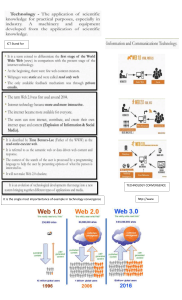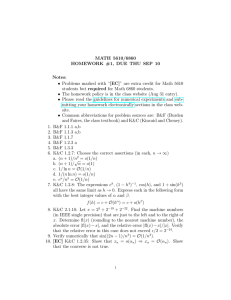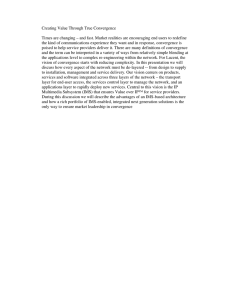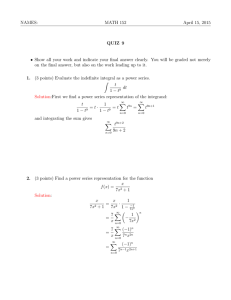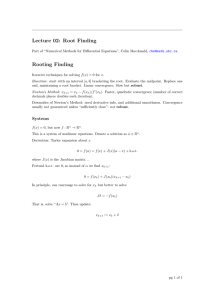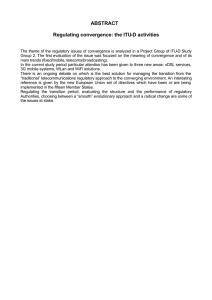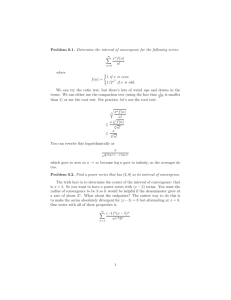MATH 5610/6860 COMPUTER LAB # 2 }, 1. Consider the sequence {x
advertisement
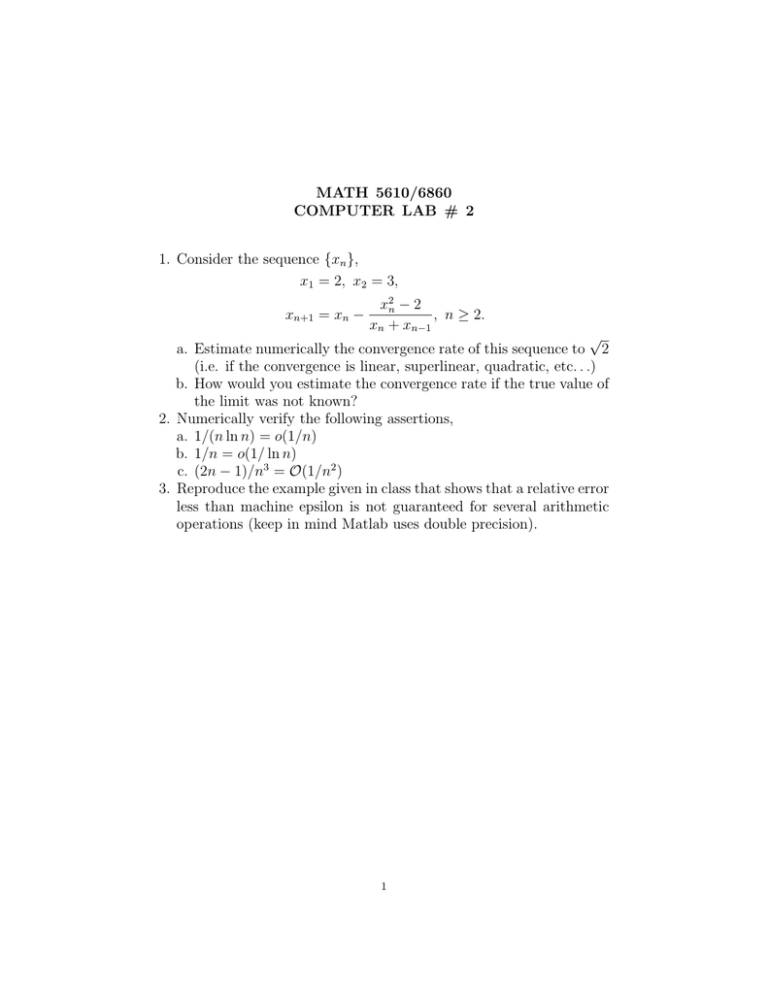
MATH 5610/6860
COMPUTER LAB # 2
1. Consider the sequence {xn },
x1 = 2, x2 = 3,
xn+1 = xn −
x2n − 2
, n ≥ 2.
xn + xn−1
√
a. Estimate numerically the convergence rate of this sequence to 2
(i.e. if the convergence is linear, superlinear, quadratic, etc. . .)
b. How would you estimate the convergence rate if the true value of
the limit was not known?
2. Numerically verify the following assertions,
a. 1/(n ln n) = o(1/n)
b. 1/n = o(1/ ln n)
c. (2n − 1)/n3 = O(1/n2 )
3. Reproduce the example given in class that shows that a relative error
less than machine epsilon is not guaranteed for several arithmetic
operations (keep in mind Matlab uses double precision).
1
